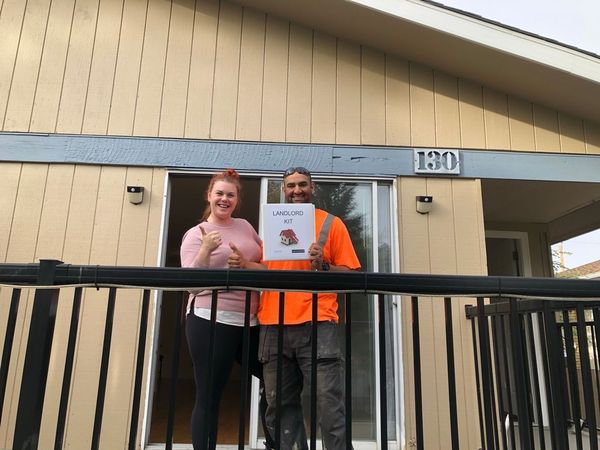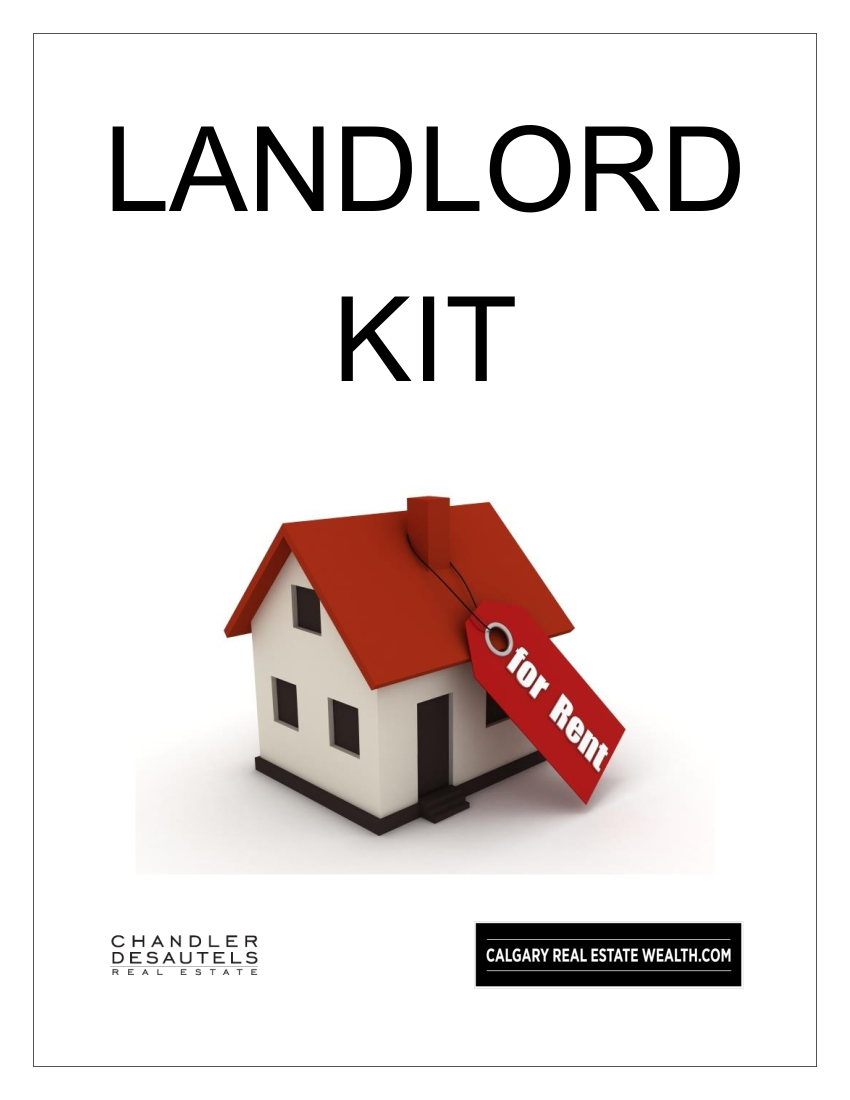How to Rent Out a Long-Term Residential Investment Property in Calgary
Renting out a long-term residential property in Calgary is a popular way to generate passive income while building long-term wealth. However, it involves more than simply finding a tenant and collecting rent. As a landlord, you have legal responsibilities and financial risks that need to be carefully managed. Alberta's Residential Tenancies Act (RTA) outlines your obligations and protects both you and your tenants. Calgary Real Estate Wealth we teach you how to follow a structured process that will help you find good tenants, avoid costly mistakes, and maintain a successful rental business. Here’s how to do it step by step.
1. Prepare the Property for Tenants
Before renting out your property, ensure it meets all basic health, safety, and livability standards required by Alberta law. You are responsible for ensuring the property complies with the Minimum Housing and Health Standards, which cover things like proper heating, ventilation, hot water, and safe electrical systems. Run down properties attract run down tenants. Any needed repairs—such as leaky faucets, broken windows, or faulty locks—should be completed before listing the unit. Deep clean the entire property, including carpets, walls, appliances, and windows, to make it inviting to prospective tenants. Minor cosmetic upgrades like painting walls, installing modern light fixtures, or landscaping the yard can significantly increase its appeal and justify higher rent. A clean, well-maintained property attracts great tenants and reduces vacancy periods.

2. Understand Alberta's Residential Tenancy Laws
Landlords in Alberta must follow the Residential Tenancies Act (RTA) and its associated regulations, which apply to most rental units in the province. The RTA outlines your legal obligations around security deposits, lease agreements, notice periods for rent increases or evictions, and property maintenance. For example, landlords can only increase rent once every 12 months for periodic leases and must give at least three months’ notice in writing. You are also required to use Service Alberta-approved forms for inspections and notices. Alberta does not have rent control, which means you are free to set your rent at market rates—but you must follow all rules around notice and lease changes. Understanding your rights and responsibilities helps you avoid disputes and potential fines or legal action.
3. Determine the Right Rental Price
Setting the right rental price is essential to stay competitive and profitable in Alberta’s real estate market. Begin by researching similar properties in your area on platforms like RentFaster.ca, Kijiji, and Facebook Marketplace to understand what tenants are paying for comparable units. Take into account the size, location, condition, and included features (like utilities or parking) when evaluating price. You also need to consider your property’s carrying costs—such as mortgage payments, taxes, insurance, condo fees (if applicable), and maintenance—to ensure your rental income covers expenses and generates a profit. Keep in mind that Alberta’s rental market can fluctuate due to economic conditions, especially in cities like Calgary, Edmonton, and Fort McMurray. Pricing too high can result in longer vacancies, while pricing too low can hurt your cash flow.
4. Decide on Self-Management vs. Property Management
As a landlord, you’ll need to decide whether to manage the property yourself or hire a professional property manager. Self-management can save you money and give you more control, but it also requires time, effort, and knowledge of the Residential Tenancies Act. You’ll be responsible for everything from advertising the unit and screening tenants to collecting rent and handling maintenance requests. Hiring a property management company typically costs 8–12% of monthly rent but can save you stress, especially if you own multiple properties or live out of town. Professional managers are familiar with Alberta laws, have access to vetted contractors, and can handle emergency calls, lease renewals, and evictions on your behalf. Weigh your experience, availability, and the complexity of managing your property before making this decision. CREW Property Leasing is our leasing division and is one of the most affordable options in the market today.

5. Market the Property Effectively
Marketing your rental well is key to attracting quality tenants quickly. Use high-resolution photos and highlight unique selling points like recent upgrades, fenced yards, in-suite laundry, or proximity to transit and amenities. Write a detailed and accurate listing description that includes the rent amount, utilities included (if any), parking availability, pet policy, and move-in date. Alberta landlords often find success using platforms like RentFaster.ca, PadMapper, Zumper, and Facebook Marketplace, as well as local classified sites. Consider creating a virtual tour or walk-through video to boost visibility and help tenants visualize the space. A well-presented, clearly advertised property generates more interest, which gives you a larger pool of applicants to choose from.
6. Screen Tenants Thoroughly
Tenant screening is one of the most important steps in protecting your investment. In Alberta, you are legally allowed to request information such as employment status, rental history, and consent to a credit check. Always verify income (ask for recent pay stubs or an employment letter), call previous landlords for references, and confirm the applicant has a solid rental history. Be consistent in your screening process and avoid any form of discrimination as prohibited by the Alberta Human Rights Act (e.g., race, religion, family status, source of income). A good tenant pays on time, respects the property, and communicates clearly—so don’t rush this process. Taking the time to carefully vet applicants reduces the risk of missed rent payments, property damage, or eviction proceedings.
7. Use a Solid Alberta Lease Agreement
A written lease agreement is essential for outlining the rules of the tenancy and protecting your rights. Alberta landlords should use the Standard Residential Tenancy Agreement provided by Service Alberta or a customized version that complies with the RTA. Calgary Real Estate Wealth only uses leases that can stand up in court and protect the landlord’s rights. This agreement should clearly specify the rent amount and due date, lease term (fixed or periodic), rules about pets and smoking, responsibilities for maintenance and repairs, and entry protocols. It’s also important to outline how the security deposit will be handled and under what circumstances it may be withheld. Both the landlord and tenant should sign the lease and receive a copy for their records. A clear, comprehensive lease helps prevent misunderstandings and provides a legal foundation in case of disputes.
8. Collect First Month’s Rent and Security Deposit
Before the tenant moves in, collect the full first month’s rent and the security deposit. In Alberta, the security deposit cannot exceed one month’s rent and must be held in a separate interest-bearing trust account. You are required to provide the tenant with a receipt and written notice of where the deposit is being held, as well as the interest rate it will earn. These funds must be returned, with interest, at the end of the tenancy unless deductions are made for damages beyond normal wear and tear. Make sure to issue a receipt for both the rent and deposit and keep a record of all transactions. Collecting payment before giving possession protects you from move-in delays or non-payment issues.
9. Conduct a Move-In Inspection with the Tenant
Alberta law requires landlords to complete a written move-in inspection report with the tenant present. Walk through the property together and document the condition of each room, noting any pre-existing damage, wear, or issues. Take timestamped photos or videos as supporting documentation and attach them to the inspection report. Both you and the tenant must sign the form, and each should receive a copy. This process helps establish a baseline for the property's condition and protects both parties in the event of a dispute over damage when the tenancy ends. A corresponding move-out inspection must also be done at the end of the lease using the same form.
10. Manage the Property Responsibly
Being a landlord involves ongoing responsibilities beyond just collecting rent. You must ensure that the property is maintained in a safe and habitable condition, and respond to repair requests within a reasonable timeframe. Alberta tenants have the right to “quiet enjoyment,” meaning you cannot enter the property without giving proper written notice—typically 24 hours. It’s a good idea to schedule annual or semi-annual inspections to ensure everything is in good order, especially for longer leases. You should also keep detailed records of rent payments, communications with the tenant, and receipts for maintenance or repairs. Building a professional relationship with your tenant and maintaining the property well can help encourage lease renewals and reduce turnover. CREW Property Services can assist you with everything mentioned above.
11. Plan for Taxes and Record-Keeping
Rental income in Alberta must be reported to the Canada Revenue Agency (CRA) as part of your personal income taxes. You can deduct many expenses related to your rental property, including mortgage interest, property taxes, insurance, utilities, repairs, property management fees, and even depreciation (capital cost allowance). It’s critical to maintain clear and organized records of all income and expenses in case of a CRA audit. Consider using accounting software or a spreadsheet to track finances, or hire a professional accountant who understands rental property taxation. If you’re operating under a corporation or holding company, tax rules may differ—so get expert advice. Good record-keeping not only ensures compliance but also helps you understand your rental’s profitability.
12. Renew or End the Lease Properly
Toward the end of the lease, decide whether you want to renew the tenancy or end it. In Alberta, fixed-term leases end automatically unless a renewal agreement is signed, while periodic leases require proper notice to terminate. If you choose to end a monthly periodic lease, you must give the tenant three full tenancy months’ written notice. If you plan to raise the rent, the new amount must be communicated with at least three months' notice as well, and only once per year. If the tenant is moving out, complete a move-out inspection within one week of possession being returned, and compare it with the move-in report. Return the security deposit (with interest and an itemized list of any deductions) within 10 days of the lease ending.
Renting out a long-term residential property in Alberta can be a financially rewarding endeavor if done correctly. From knowing your legal obligations under the Residential Tenancies Act to attracting and retaining quality tenants, each step plays a role in the success of your rental business. Whether you choose to self-manage or work with a property manager, staying informed and proactive is key to long-term success.
Calgary Real Estate Wealth is a full service real estate investment firm that sources, analyzes & negotiates premium investment properties for its investors since 2006. Calgary Real Estate Wealth offers mentorship on all aspects of real estate investing investing through bi-weekly webinars, blogs, podcasts, books & its You tube channel, CREW TV. Calgary Real Estate Wealth also offers, through it's leasing division, CREW Property Services, tenant placement services, ongoing leasing services, and property maintenance and renovations for each property purchased. Real estate investing has never been so easy!